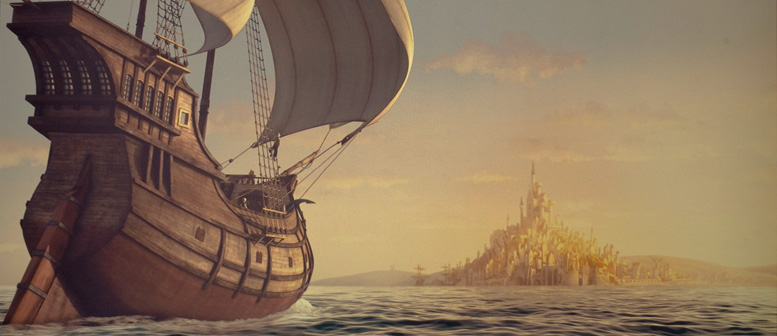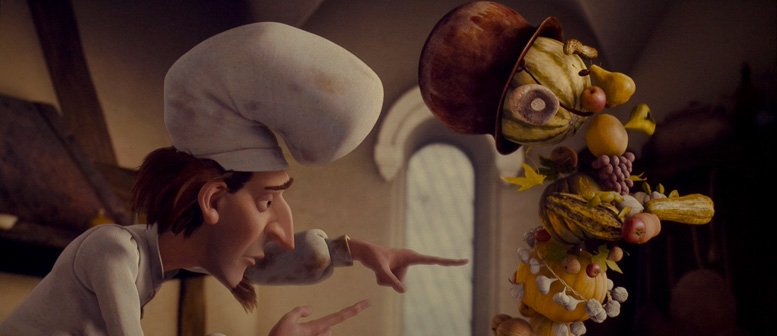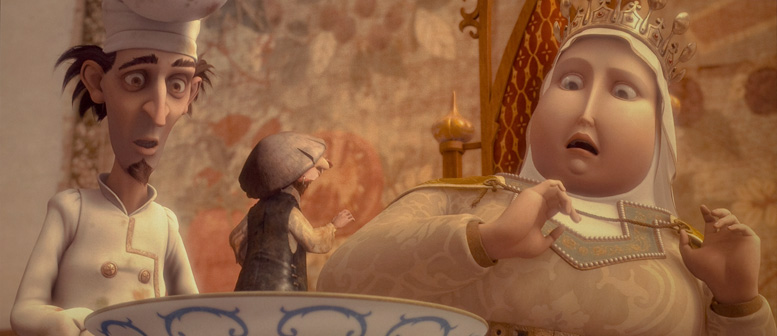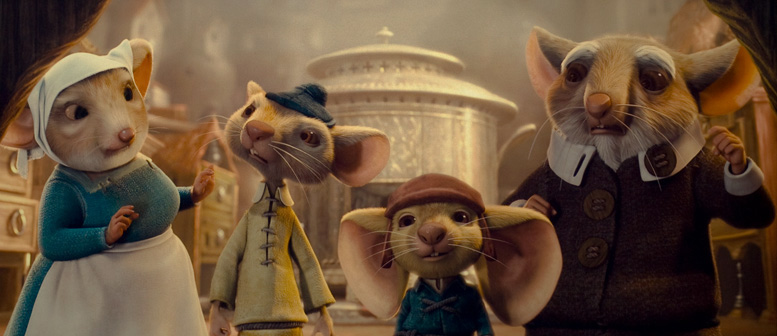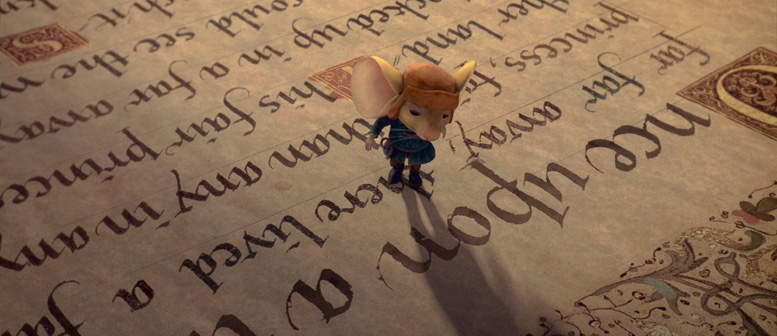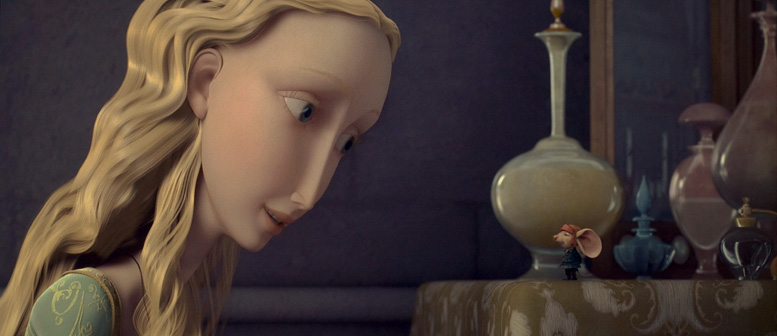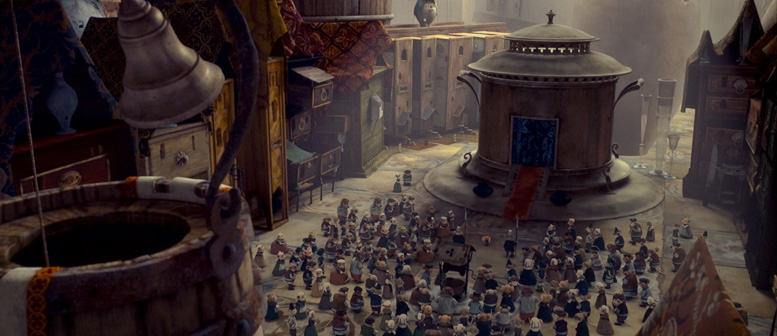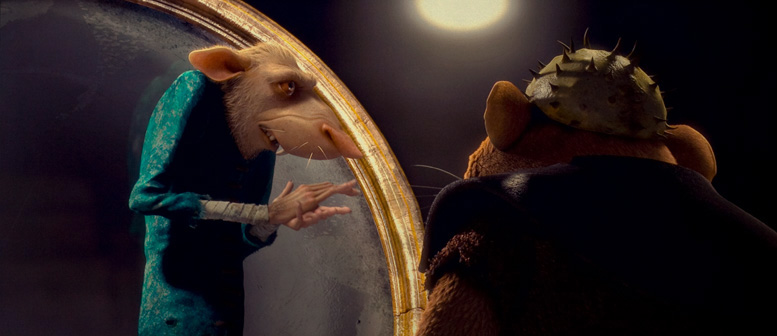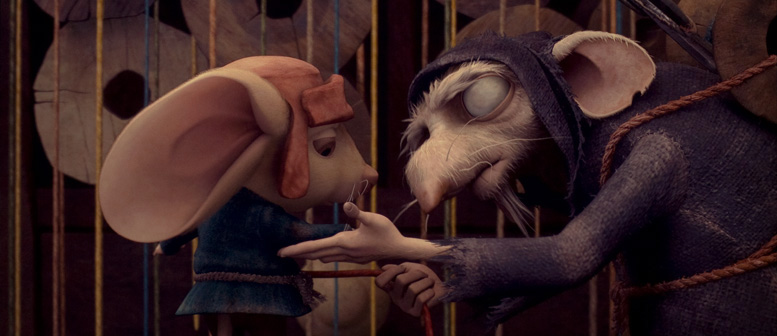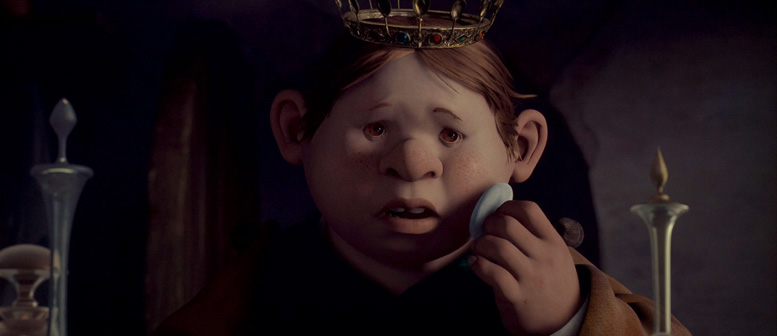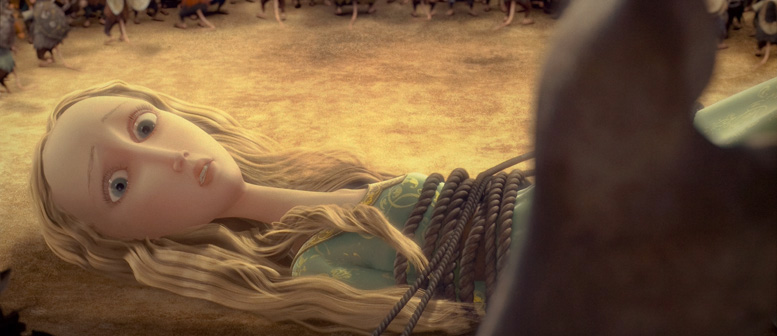Review by Leonard Norwitz
Studio:
Theatrical: Universal Pictures & A Larger Than Life
Production & Framestore Animation
Blu-ray: Universal Studios Home Entertainment
Disc:
Region: All
Runtime: 94
Chapters: min
Size: 50 GB
Case: Standard Blu-ray case
Release date: April 7, 2009
Video:
Aspect ratio: 2.35.:1
Resolution: 1080p
Video codec: VC-1
Audio:
English DTS HD-Master Audio 5.1; Spanish & French DTS 5.1.
Subtitles:
English SDH, Spanish & French
Extras:
• The (Mostly) Non-Fictional Making of the Movie (11:41)
• Scene Progressions (35:08)
• Top Ten Uses for Oversized Ears (1:20)
• 2 new Deleted Songs (4:36)
• Make Your Own Soup Game
• Card Creator
• Sneak Peak at Curious George 2
• BD-Live 2.0
The Film:
I have to get this off my chest: Animated feature films
should not be about the actors who voice the characters. To
place their names in the credits before the movie begins as
if they are "in" the movie discredits the animation and it
guides audience attention in the wrong direction.
When I saw Walt Disney's Sleeping Beauty in 1958 I did in
fact know who Mary Costa was. I knew what she looked like
from her appearance as co-host of the CBS series "Climax"
(and I would come to know her singing voice from the San
Francisco Opera.) But none of the other actors' names were
familiar to me then (as some are now.) When Briar Rose
enters, speaks and sings, I did not think: "Mary Costa." Nor
was I expected to. Why is that, I wonder?
On the other hand, the moment I hear Roscuro's voice, I
think: "Dustin Hoffman" – a voice so distinctive I couldn't
get the actor out of my head for the duration. Once bitten,
I began to try to associate the other actors with their
characters. I don't think this is what we should be doing.
Not on our first encounter at any rate. But I couldn't help
myself. I would like to not have known, for example, that
Emma Watson was the voice for Princess Pea: She was
outstanding in the part (as was the animation of her
character), and knowing it was she kept reminding me of
Hermione Granger. Similar associations took me out of the
movie from one end to the other.
So right off the bat The Tale of Despereaux has two
problems: the casting of Dustin Hoffman (who is otherwise
terrific, by the way) in a part that starts off the movie
and the listing such a list of luminaries before the movie
begins. Of the first 14 names in the credits I can imagine
the voices of 11 of them without a prompt. This does not
auger well for a fairy tale experience.
Disney long ago and Pixar generally have demonstrated that
it is totally unnecessary to have A-list actors in depth
(though I wish they would X John Ratzenbegger permanently
simply because he is too recognizable. It's not like he's a
walk-on like Hitchcock.) When Pixar brings in the credits
for Toy Story several minutes after the movie begins they
are content to mention only the names at the top of the
production. Randy Newman and Joss Whedon were probably the
biggest names then, but of Tom Hanks and Tim Allen, we don't
hear bupkis until the end of the movie. These guys were
picked because they are fabulous voice actors, not because
their presence would bring in audiences. Of course, once
word got around, it couldn't but help, but the audience's
attention isn't deliberately drawn to them out of marketing
or casting. There was none of "Tom Hanks IS Woody" garbage.
In any case, neither Hanks nor Allen have voices nearly as
distinctive as Hoffman's. It is unfortunate that the success
of an animated film should ever have to depend on its vocal
talent. I come down strongly on the side of the Pixar view
that character and animation comes first, voicing comes
second, and name recognition, last.
That off my chest, let's get move on to the screenplay. At
the risk of overanalyzing a mere animated feature film, I
found myself flinching at some of the lines. Try this one,
spoken by the narrator (Sigourney Weaver): "Of course,
destiny is a funny thing. We go out to meet it and we don't
always know that we are." Are what, I asked her – and got no
reply? Or, when our hero mouse is led away by a blind Charon,
he is wrapped in a piece of yarn so that he can be lowered
into Ratworld and from which no one has returned alive (Do
they ever return dead?) As he binds Despereaux with the
yarn, the blind mouse says: "So you're the brave one.
There's no shame. It's good. It'll carry well down there." I
assume the "it" here is bravery. But it's an odd usage and
is confusing because of the yarn that will "carry" the mouse
into the pit. The visual at this point encourages the
confusion. There are quite a few of these, to say nothing of
the misguided expectation that "soup" and "rain" ought to
carry the metaphorical weight that is demanded at the film's
climax - all the more surprising considering the writer is
no less than Gary Ross, the man who gave us Big,
Pleasantville and Dave.
I found the production design and the look of the various
characters engaging. There is no attempt at a highly
resolved pictorial, so this movie never becomes a challenge
to the likes of Pixar or the better Dreamworks movies. Still
there are some weird oversights, like not respecting that
pupil size needs to be consistent with light source, which
it isn't. There's one scene where a host of mice are looking
at the same light source, with large and small pupils. I
assume we are not meant to draw any inferences as to the
state of their blood
The Movie: 5
Based on the Newbery Medal winning book by Kate DiCamillo,
The Tale of Despereaux is the first product from a
partnership between Universal Pictures and British
Framestore Animation. The story is about a heroic and
honorable mouse named Despereaux who saves the kingdom from
a depression caused by the surprising and inadvertent death
of the queen by way of having discovered a seafaring rat
named Roscuro (Dustin Hoffman) who happened to drop into her
soup, which the king summarily outlaws. He sits in the hall
playing his lute from that time forward. So much plot. So
depressing.
Rats – and, we assume, by extension, mice - are no longer
granted their once third class citizenship they once
enjoyed, and have retired to the underworld where they
behave a lot like the populace during the French Revolution
– Their leader, with the unlikely name of Botticelli (Ciaran
Hinds), and who bears more than a passing resemblance to Max
Schreck's Count Orlok, is fond postures and pronouncements.
Mice live in their own much more pleasant village within the
walls of the castle. Despereaux (Matthew Broderick), from
birth, was not like other mice: he wouldn't cower, for one
thing. He is frequently upbraided by his parents and the
village elders for being unmouselike, but he persists in
exploring, even unto the library of the castle where he
reads of a time when heroes where heroes and princesses
needed them to live happily ever after. One thing leads to
another as Despereaux finds his way to Princess Pea's
bedchamber where she looks longingly out the window.
Despereaux notes the obvious, for which she is grateful. But
her maid, Miggory Sow (Tracey Ulman) who always wanted to be
a princess herself, has designs on Pea's tiara which, in
turn, bring the rats back into play. And foul play, it is.
Will our hero come to rescue? And, if so, how?
Image:
9/9
The first number indicates a relative level of excellence
compared to other Blu-ray video discs on a ten-point scale.
The second number places this image along the full range of
DVD and Blu-ray discs.
Considering that the source material does not revel in a
highly resolved picture to start with, the image is probably
just about as good as Blu-ray can make it. No blemishes or
distracting transfer issues, the color and contrast is a joy
to behold.
Audio & Music:
6/8
I found a curious lack of crispness or dynamic punch, and
surrounds are not sufficiently engaged. I miss immersive rat
noises in the coliseum scenes. The lute music is sweet and
tender.
Operations:
8
The menu is laid out like other Universal Blu-rays. Arrows
tell you which way to direct your remote, and the bonus
feature instructions are detailed and intuitive. The chapter
menu includes buttons for U-Control in case you want to
approach those functions from that point. There are only two
U-Control opportunities, easily accessed from the menu or on
the fly.
Extras:
6
It may be brief, but the twelve-minute Making-of featurette
covers just about everything you want to know about the
origins of the story (the prize-winning book by Kate
DiCamillo), Gary Ross' involvement, voice casting and
direction (usually offered as a separate segment, but is
perfectly and concisely distilled here) and the eventual
passing of the buck to the animation studio. The two
"deleted" songs ["It's Great to be a Rat" & "Soup"] are
presented against their would-be storyboards never had a
chance – we can hear why. The Top Ten Uses for Oversized
Ears are cute ideas that take about a minute to express
themselves. The Scene Progressions feature takes us from
script to storyboard to layout across a number of scenes.
There are two games for the youngsters: Make Your Own Soup
isn't as tasty as it sounds. The Card Creator at least has a
shot at making use of one's creativity as we are directed to
try this or that Despereaux pose against a choice of
background, add a movie quote, and card border, and voila!
It's a big plus that all the features are presented in high
definition.
U-Control offers two very different and useful PIP features:
the first is more or less a complete pencil sketched
storyboarding of the entire movie. The other is largely
devoted to behind the scenes voice-acting coaching and
recording. It would get a bit repetitive if it weren't for
alternating conversations between the "vocalists" and the
filmmakers. Anyhow, I thought the matter was well covered in
the making-of doc.
|
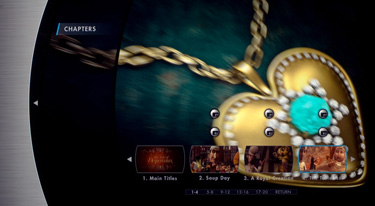 |
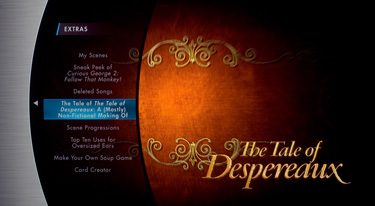 |
|
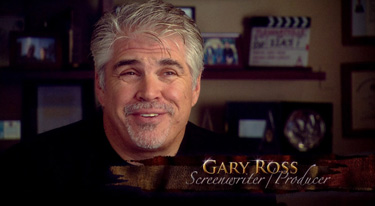 |
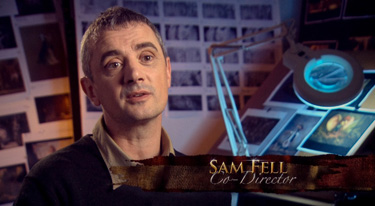 |
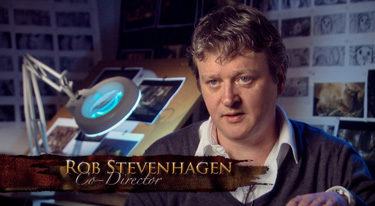 |
 |
 |
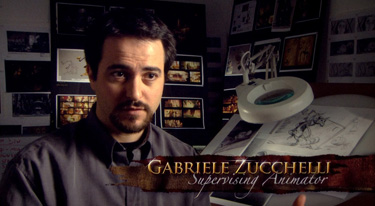 |
Bottom line:
6
It is the unique production and character design and the
nicely resolved high definition image that makes this
Blu-ray attractive and interesting. The complexities of the
story, its various layers and stories within stories are
more cumbersome than confusing. The language evokes the
stuff of fairy tales, but is too in love with itself to
notice when it is unclear. The extra features, too, pretend
a level of self-importance that isn't warranted by the end
result. Definitely worth renting.
Leonard Norwitz
April 6th, 2009
![]()
![]()

![]()
![]()
![]()
![]()

![]()
![]()


